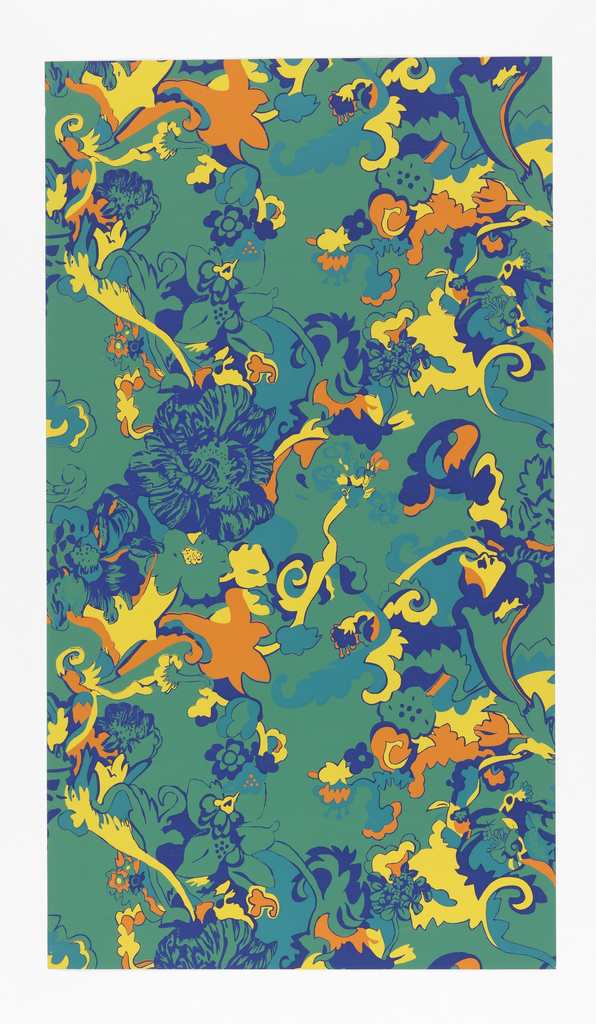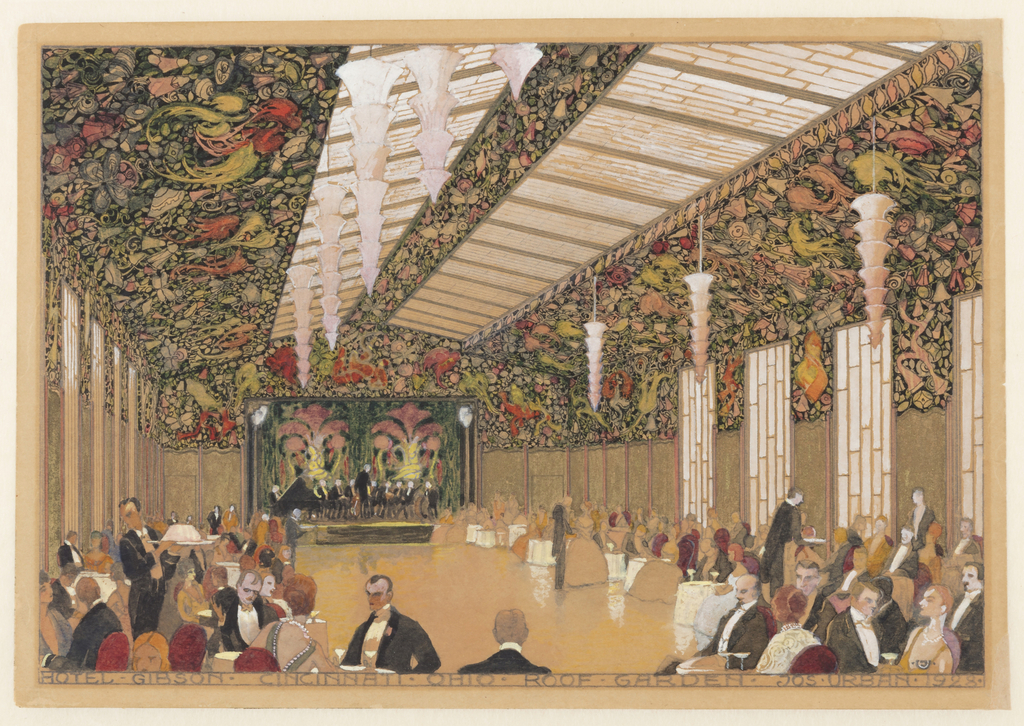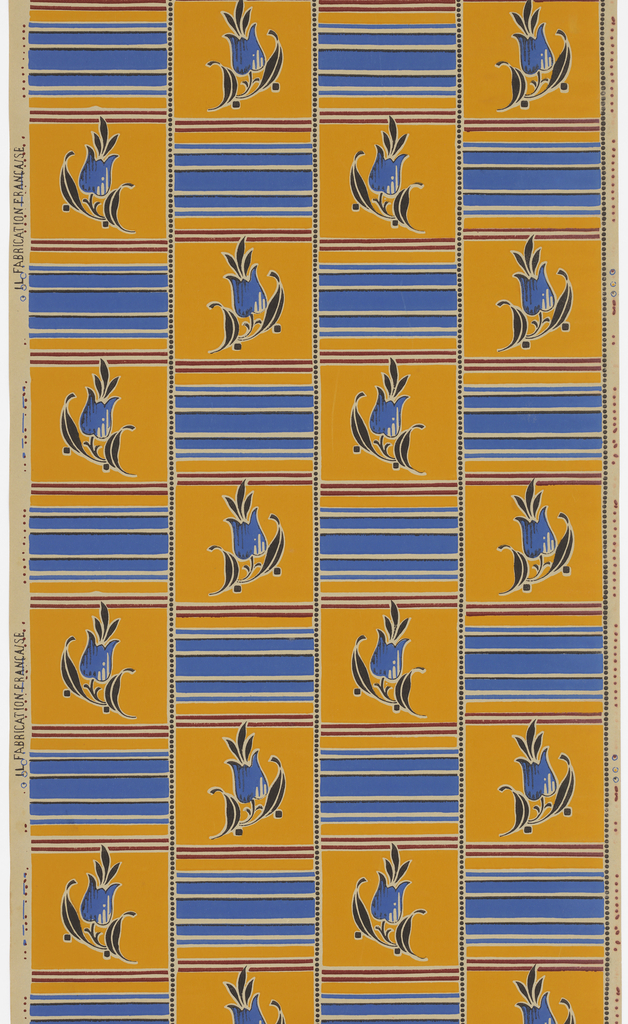This opulent coat, called a habit, was the primary component of the habit à la française, the predecessor of the three-piece suit that also included a waistcoat (vest) and breeches. This type of outfit, often rich with embroidery, would have been donned for formal events during the decades before the French Revolution. This example was...
On this sidewall, strange enormous flowers drawn in blue are scattered on a green ground. Their tortuous curling stems are highlighted in bright orange and yellow. It is these bright highlights that catch our eyes first, so that our first thought is that what we are seeing is a purely abstract paper of swirling forms....
Now on view in The Jazz Age: American Style in the 1920s, this vase by Dagobert Peche is an explosion of movement and life.
Now on view in The Jazz Age: American Style in the 1920s, Joseph Urban's design for a roof garden reflects turn-of-the-century summer dining at its finest.
Whatever would William Morris think? How would he feel seeing how this clever sidewall takes his beloved wallpaper design (the first he ever created) and stylizes it into a series of dots? Whether it brings to mind the Ben Day dots used in comic books or an LED display, the result seems to have been...
Innovations in transportation and mobility were to become a common theme in wallpaper design. Similar images frequently appeared on bandboxes and hat boxes starting in the 1830’s. A sign of mobility themselves, these boxes were used for the safe transport and storage of men’s removable collars and hats. Early designs include historic hot air balloon...
This paper fascinates me, which explains why I acquired it for the museum collection. It is an inexpensive, Depression-era paper, but it packs a lot of punch. The design is reminiscent of ceramic tiles which makes it a less than formal pattern and gives it more of a functional aesthetic. While this certainly could be...
During the second half of the nineteenth century, there was a burgeoning interest in the designs of the Middle East, Japan, and China. This passion for all things that were “exotic” in the eyes of Americans led to a craze for objects inspired by these international decorative arts. At the time, much of the silver...
This beautiful panel is from a scenic called Le jardin d’Armide, the Garden of Armida. Printed in the mid-19th-century by the French manufacturer Manufacture Jules Desfossé, its title is derived from a location in the 16th-century Italian epic poem Jerusalem Delivered by Torquato Tasso. The work was a late example of the romance, recounting the...








